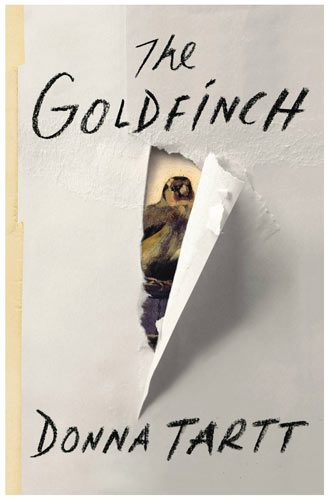
It’s International Book Week! Read one of these books in our Winter Reading issue and post the fifth sentence on page 52 …
Whoops. Spoiler alert: There is no International Book Week, though there is a United Nations World Book and Copyright Day, which was April 23, as well as a Banned Book Week back in September. But really, do you need a Facebook status update to remind you to share the joys of reading? Whether you are a solo peruser, a book club member or you only read when you are stuck on an airplane for three hours, we present to you our annual roundup of some of the books we enjoyed reading this year.
(** = Oregon author)
fiction
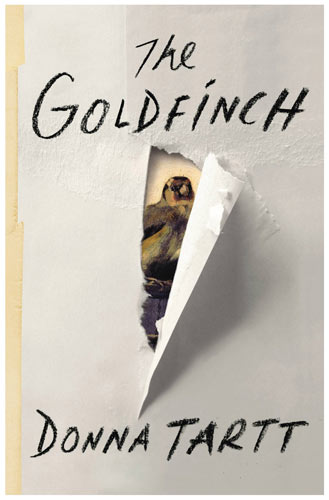
The Goldfinch By Donna Tartt. Little, Brown and Company, $30.
It’s fitting that Donna Tartt’s third novel, The Goldfinch, is centered around a painting. Tartt’s rich writing forms brushstrokes clear enough to see, carrying the reader from New York to Las Vegas and Amsterdam. Theo, a young teenager, takes a painting from the Metropolitan Museum of Art in the aftermath of a bombing that kills his mother. He tastes privilege while staying with a classmate until his deadbeat father resurfaces and takes Theo to Vegas, where they live. Theo eventually escapes back to New York.
In each of Tartt’s three novels, the detail feeds the plot. Tartt’s ability to paint vivid scenes and build characters’ dread and anxiety thumps the reader’s heart. The Goldfinch is a page-turner, even as throughout its 784 pages, it’s difficult not to stop and reread passages simply because the writing is brilliant. — Shannon Finnell
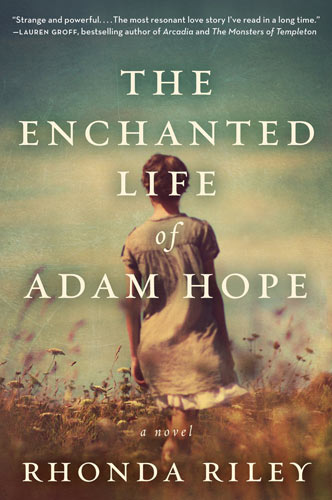
The Enchanted Life of Adam Hope
By Rhonda Riley. HarperCollins, $15.99.
Inexplicable is how Evelyn describes the being who was first her lover, almost her twin and later became her husband. The Enchanted Life of Adam Hope is a Southern tale of love that comes in unexpected forms. It is magical realism meets romance novel; you suspend your disbelief and dip into a love story that is as strange as it is lovely. The tale of love and family is set to a backdrop of detailed descriptions of nature, the land and the horses Addie/Adam loves and trains.
From the red clay of North Carolina to the clear springs of Florida, Evelyn and the stranger that becomes the love of her life, Addie/Adam, and their family love, survive loss and transition from the post-World War II era to the changes of the ’60s. In a recent interview author Rhonda Riley described her book as “The Time Traveler’s Wife meets Cold Mountain with a dusting of LSD,” and that is quite apt. — Camilla Mortensen
The Son: A Novel By Philipp Meyer. HarperCollins, $17.99.
Epic. That’s the word that comes up again and again when reviewers extoll the virtues of Philipp Meyer’s The Son. The novel follows the coming of age of Eli McCullough, the first male child born in the Republic of Texas, and leaps about through the intertwined stories of his descendants, many of whom share his ruthless pragmatism. When Eli is 13, his family is murdered by Comanche who kidnap him, and then raise and adopt him.
Eli’s children and their children bear the scars of a family that will sacrifice anything for land and power. His adopted Comanche father Tosehway tells him, “I will tell you something my father once told me. The difference between a brave man and a coward is very simple. It is a problem of love. A coward loves only himself … The brave man loves other men first and himself last.” Eli is willing to kill, willing to die and more than willing for others to die, but he fails at the sense of bravery Tosheway attempted to instill. — Camilla Mortensen
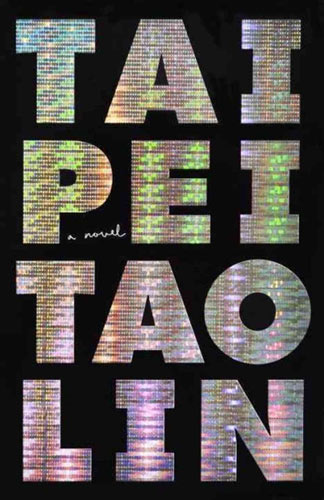
Taipei By Tao Lin. Vintage, $14.95.
Taipei is a minutely described, internally disconnected but intimate portrait of a relatively brief span of time in a young author’s life among his peers in New York. It opens with the dispassionate ending of a yearlong relationship and wavers through the desultory, out-of-focus following events, including two trips to Taipei to visit his parents and a handful of parties and authors’ readings.
Great attention is paid to the imperviously detached thought processes of the protagonist, Paul, and his time spent on his MacBook, tweeting, checking Facebook and refreshing his Gmail. The text messages he sends his disconnected acquaintances play a central role in providing dialogue, while a running list of the drugs he takes with his friends and eventual girlfriend, Erin, shape the tone and trajectory of the plot.
The read became immediately more compelling with the aid of biographical information and when I discovered it to be semi-autobiographical. Searching online for info about Tao Lin catapulted me into discussions around the value of such lucidly personal and uneventful writing. Some decry the novel a plotless bore, while others praise Lin profusely as the voice of his generation.
Paul is a paragon of the drug-addled, modern, financially secure young writer, disconnected from nature, reeling in the artificial light and heartless fabric of metropolitan existence. Is the novel merely a glimpse into the life of a privileged and successful author, running in a tight bubble of likewise disaffected, apathetic artists? More so, I think it captures a very particular modern malaise and rubs at the raw nerve of a culture subsumed and disintegrated by the noxious effect of marketing and consumerism. For this reason it is a vital, timely vision of how a certain subset of our culture sculpt out their existence, isolated, self-involved and burdened by privilege. — Paul Quillen
Searching for Someday By Jennifer Probst. Simon and Schuster, $7.19.
Sometimes you just need an airport read. Whether or not you are actually flying, there are days where you need something mindless. Searching for Someday is a romance with a cute pit bull and a bit of magic thrown in — the heroine happens to have a supernatural ability to sense when couples are destined to be together.
Author Jennifer Probst also writes erotic fiction, so sometimes this tale of a single matchmaker Kate Seymour looking for love is a little heavy on descriptions of hero Slade Montgomery’s hot body and throbbing need for Kate. Don’t pick up Searching for Someday if you are looking for anything brainy. Read it if you liked 50 Shades of Gray and like to read a little romance here and there. I’m a dog person, so the descriptions of Kate’s beloved disabled rescued pittie Robert make up for the more mindless moments. — Camilla Mortensen
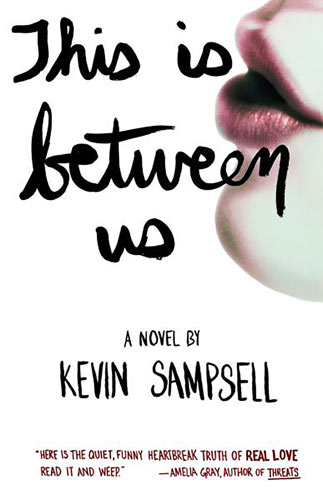
** This Is Between Us By Kevin Sampsell. Tin House, $15.95.
This Is Between Us is written in the same flash fiction, micro-chapter style as Kevin Sampsell’s debut memoir A Common Pornography. The Portland author is a master of the form, building rhythm and stitching together narrative using memory like a photo album. For this reason, the two books feel related, a hyper-confessional tone running throughout. Pornography is a memoir of growing up in rural central Washington, with all the messy, TMI, icky moments of teenagers; Between Us is the five-year life cycle of an adult love relationship, with all the messy, TMI, icky moments of a post-divorce, blended family. Infinitely readable, I challenge anyone to not find something of himself or herself — often uncomfortably so — in Sampsell’s writing.
The two main characters are “Me” and “She” or “You.” The narrative voice is male: He’s preoccupied with sex, self-centered, questionably straight and marginally faithful. But he’s also sensitive and perceptive, doing his best to be a good dad and partner while facing real obstacles to the intimacy he seeks. “Everyone is a museum,” Sampsell writes. And it’s with this scientific eye he describes his partner. He worships her physically (again, relatable) but is challenged to overcome his past, escape insecurities and heal from heartbreak — dooming his relationship to nasty cycles of hot and cold, sexual dalliances and frustrating monotony, devastatingly real for anyone who’s attempted to maintain commitment over time.
Sampsell doesn’t always hit on all cylinders: Planes flying into the Twin Towers as sexual metaphor doesn’t work — not in a too soon way, but in a that’s just bad writing way. And “She” is a bit of a troubled Portland hipster stereotype: Pill popping, she puts on a mask and smashes dishes just “to see what it would be like to shatter something.” But other times he gets the spell a woman can cast on a straight man dead right, if somewhat overwrought: “I like the gaps in you … the smooth skin space between the bottom of your shirt and the buttons of your Levis … the thin delicate bridge between your toughness and sadness.” Sampsell is a family man, so I’m guessing he understands, like everyone in a long-term relationship, that kind of adoration is and isn’t love all at the same time, that really making things work is a lot scarier than farting, expressing sexual preferences or confessing indiscretion to your partner. Perhaps in his next book he’ll tell us about how he learned those hard lessons, too. — Will Kennedy
nonfiction
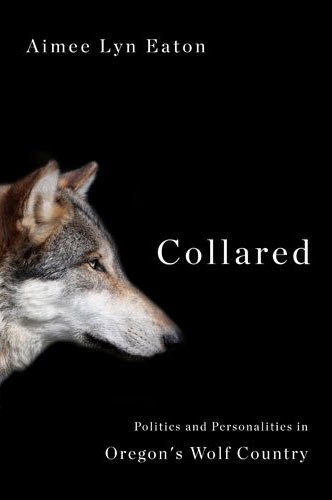
** Collared: Politics and Personalities in Oregon’s Wolf Country By Aimee Lyn Eaton. Oregon State University Press, $15.
As a wolf fan with an interest in following the progress of wild wolves in Oregon, I couldn’t wait to read Aimee Lyn Eaton’s Collared: Politics and Personalities in Oregon’s Wolf Country and get the detailed context and history that is oftentimes absent in news stories about Journey (aka OR-7), the traveling wolf, or the most recent legislation changes to wolf regulation.
Eaton’s take on the great Oregon wolf debate, which started in 1999 when a female wolf dispersed from her Idaho pack into the northeastern portion of this state, is a comprehensive look at Oregon’s fascination with the enigmatic canids and also its fear. She dives into the divisive viewpoints on the matter, giving a voice to Eastern Oregon ranchers who deal with loss of livestock due to wolves and pointing out that the issue is not as cut-and-dry as ranchers versus conservationists, with state wolf officials acting as middlemen. If you’re just getting into the multifaceted story of Oregon’s wolves and want to know what’s happened over the past decade, Eaton’s book is an informative blend of history, narrative and storytelling that’s easy to take in. — Amy Schneider
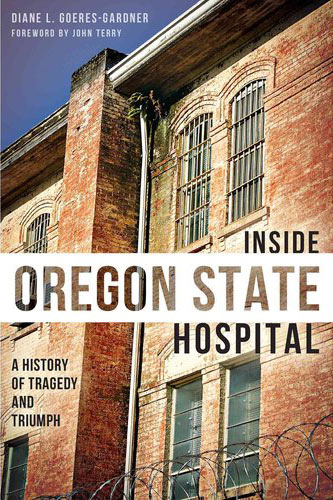
** Inside Oregon State Hospital: A History of Tragedy and Triumph By Diane L. Goeres-Gardner. The History Press, $21.99.
There are few Oregonians who aren’t at least aware of the Oregon State Hospital, the setting for the 1975 film One Flew Over the Cuckoo’s Nest. But Diane L. Goeres-Gardner’s Inside Oregon State Hospital: A History of Tragedy and Triumph is more than just a retrospective on a tumultuous establishment; it is also a snapshot of the patients, doctors and decisions that make up the vivid history of the institution.
Goeres-Gardner’s book details not only the long and complex bureaucratic history of the hospital, but also delves deeply into the lives and treatments of specific patients, as well as the careers of many of the key decision makers during their time at the hospital. The book utilizes public records leading up to the building of the hospital in 1883 and through the recent renovations in 2008, and it is able to give a voice to those who have had none and went through many archaic and often brutal treatments. Equally touching are the accounts of doctors who realize their methods are wrong but can do very little to change the system.
While sometimes dry, Inside Oregon State Hospital is an undeniably moving account of a hospital trying to make the best of some very extreme circumstances. The extensive detail put into the descriptions of places and people gives a fully realized picture of what has historically felt like an institution shrouded in a certain amount of mystery. — Jordan Tichenor
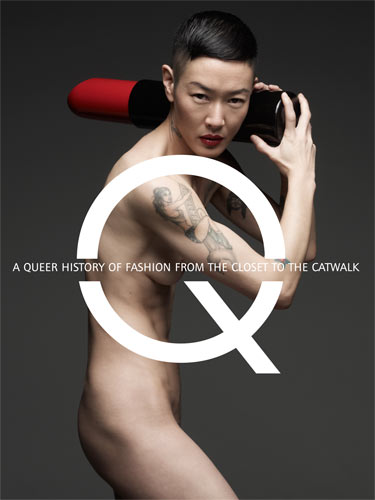
A Queer History of Fashion: From Closet to the Catwalk By Valerie Steele. Yale University Press, $50.
Molly, dandy, garçonne, pederast, Hervey, macaroni, petit-maître, Fribble, she-he gentry, man milliner, Jemmy, bear, twink, femme, the third sex, clone, lipstick lesbian, bear, butch, homothug.
These are some of the labels you will come across in A Queer History of Fashion: From the Closet to the Catwalk, a fascinating collection of essays that explores the relationship between style and sexuality throughout Western history, from the flamboyant courts of 18th-century Europe to the hipster ambiguity of millennial Brooklyn. Curated by Valerie Steele, the director of New York’s Fashion Institute of Technology, A Queer History of Fashion makes a pretty indisputable case that the queer community — both as designers (Coco Chanel, Christian Dior, Jean Paul Gautier) and purveyors (Count Robert de Montesquiou, Greta Garbo, RuPaul) — has been the engine propelling fashion innovation.
It’s also one hell of a historical romp: In Steele’s own essay, she describes how Oscar Wilde’s 19th-century trial for “gross indecency” was as much about his sartorial preferences (capes, silky cravats and those notorious green carnation boutonnieres) as it was about his sexual ones. Or in “Born this Way: Lesbian Style Since the Eighties,” Sydney-based cultural studies scholar Vicki Karaminas explains that Lady Gaga’s alter ego “Jo Calderone” actually “embodied a look that was popular amongst working-class white American lesbian butches in the 1950s.”
A Queer History of Fashion is an enlightening read that is authoritative enough to act as textbook while still exuding enough juicy history to read in bed or put on the coffee table. — Alex Notman
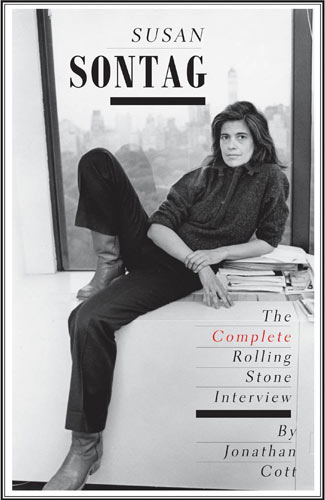
Susan Sontag: The Complete Rolling Stone Interview by Jonathan Cott. Yale University Press, $26.
American intellectual, author and filmmaker Susan Sontag swore in her journal at the age of 32 “To give no interviews until I can sound as clear + authoritative + direct as Lillian Hellman in Paris Review.” The year was 1965, a year before Against Interpretation was published — the collection of essays that made her a household name and secured her a spot in the international intelligentsia — and 13 years before Rolling Stone published a groundbreaking Q&A between Sontag and contributing editor Jonathon Cott.
Now Cott has released Susan Sontag: The Complete Rolling Stone Interview, their unabridged 138-page exchange that spanned several months across Paris and New York City in 1978. Sontag kept her journal’s vow: This rare, raw account shows a giant of American thought at her best, speaking, as the author notes in the preface, in “measured and expansive paragraphs” on topics ranging from cancer to art, fascism to sexuality.
One need not be a devotee of Sontag’s oeuvre to enjoy the book; it is awe-inspiring in and of itself to eavesdrop on a conversation between great minds. Sure, there are a handful of ivory tower moments deserving of eye rolls, but overall the book is an eye-opening account of a special time and place in the American psyche where Rolling Stone’s coveted interview was with a female scholar. — Alex Notman
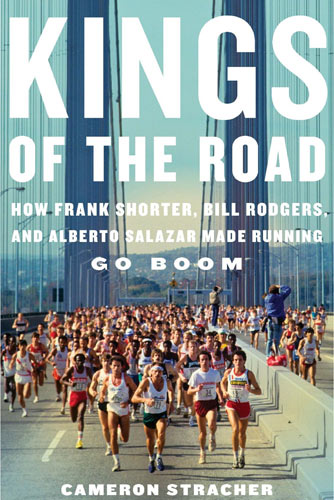
Kings of the Road: How Frank Shorter, Bill Rodgers, and Alberto Salazar Made Running Go Boom By Cameron Stracher. Houghton Mifflin Harcourt, $25.
In a city such as Eugene with a rich history of running on tracks and trails, Cameron Stracher’s work of nonfiction, Kings of the Road, is a must-read for anyone immersed in Tracktown USA culture. Chronicling the stories of runners Frank Shorter, Bill Rodgers and Alberto Salazar, Stracher delves deeply into the rigorousness and romance of the sport these three, in the ’70s and early ’80s, helped cast in the national limelight.
Wonderfully written, with description that motivates you to lace up your shoes and send you out on the sawdust trails, it’s a story full of fervor rather than simply biographical documentation. The passion for running flows off the pages, and it is clear why the sport is a way of life for these men. The way Stracher documents the journeys of Shorter, Rodgers and Salazar brings not only their careers to the forefront but also the people within and the growth of the athletic art they lived and breathed. Every page evokes the fire the giants of the sport ran with, and that fire will keep you rooting for them until the end. — Nick Poust
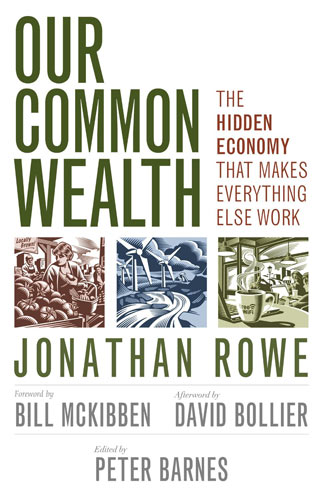
Our Common Wealth: The Hidden Economy That Makes Everything Else Work By Jonathan Rowe. Berrett-Koehler Publishers, $16.95.
I have found myself still somewhat drunk on the nihilist sap that oozed from eight years of George W. Bush and from the stumbling semi-carcass of an out-of-control culture that is too high on money to imagine making needed changes to our lives to move in a direction that will remedy the many social and environmental ills that stare us in the face.
Still, I desperately struggle to temper this intoxicating anger and disgust-turned-numbness with a deep-rooted optimism, which I know is as much an option. This is the kind of book that offers hope where our negatively biased media behemoth offers none. It is brimming with the genuine optimism and solution-oriented spirit I seek.
The book is broken into two parts: theory and practice. Basically, the “Commons” are those things owned by everyone and no one: air, water, public facilities and lands, research and, Jonathan Rowe convincingly argues, the internet. These are things that are fundamental to our survival or that logically belong outside the control of corporate or business entities due to their foundational and constructive influence on society.
Rowe is ultimately arguing that these resources should be protected by the same legal structures and bodies that protect private property and corporate interests. So the corporation that poisons our food, water and soil should be legally required to pay everyone, both for access to and for misuse of these resources, given their vitality and basic necessity. More so, the government is responsible for ensuring this is carried through for the benefit of all.
Most important, however, is the focus on local health and connectedness as the antidote for the disconnection and social and environmental discord we see today. To be a touch overly simplistic, connected communities are the foundation for an ultimately healthier society. — Paul Quillen
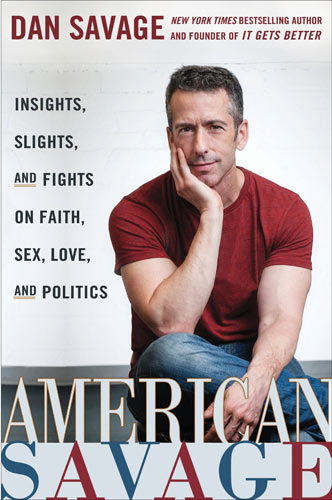
American Savage: Insights, Slights, and Fights on Faith, Sex, Love, and Politics By Dan Savage. Dutton Adult, $26.95.
Dan Savage has been writing about coming out, breaking up, tying the knot and getting it on in the most blunt sex-advice column, “Savage Love,” for more than 20 years. It’s run in Eugene Weekly since 2007. He’s gotten flack for his previous anti-bisexual comments and his stances on outing others, but these make for some of the best topics in his newest book, American Savage. He addresses the criticisms straight on and brings together the best topics he’s written about in the past.
Part memoir, part research-based opinion, American Savage is chock-full of some hilarious (and some serious) conversations with Savage’s son, stories of your least favorite, once-closeted politicians and explanations of some of Savage’s most controversial statements and opinions. He perfectly incorporates his Catholic upbringing and pays beautiful homage to his mother.
He’s passionate, honest and risky, and at times rather explicit but never vulgar (OK, actually, sometimes he might get a bit vulgar, but it’s done well). American Savage is a quick read for those who are already fans of Savage and may change the opinions of those who can’t stand him. — Carolina Reid
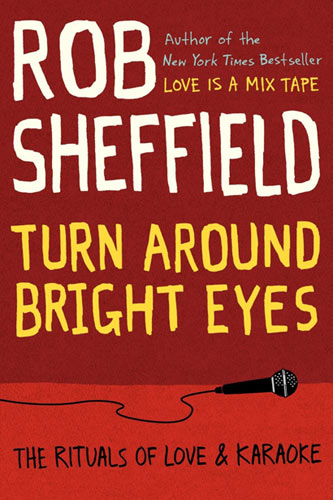
Turn Around Bright Eyes: The Rituals of Love and Karaoke By Rob Sheffield. It Books, $25.99.
For music savants, there is really only one lens you can use to decipher the world. From understanding childhood memories to the tides of love, these hungry-hearted audiophiles take solace in their music. Rob Sheffield is a music nerd. I’m sure he geeks out too much at music conferences and ends up eating lunch all alone next to the radio. The music journalist is a contributing editor for Rolling Stone and has written two previous books dissecting life through music. One of the chapters in Turn Around Bright Eyes discusses a post-9/11 New York City where the desolation was briefly paused when a woman took the karaoke stage and ripped though Nena’s “99 Red Balloons.” Sheffield writes within his means and never tries too hard all while maintaining a neat and concise literary flow.
Turn Around Bright Eyes is another Sheffield memoir where the writer looks back to his past while his record player spins. His first book, 2007’s Love is a Mix Tape, discussed his brief but loving marriage that was cut short when his wife suddenly died from a pulmonary embolism. His current book picks up the pieces of his heart and strings it together through the art of karaoke. “If you’re someone like me, a fan who loves music but could never hack it as a musician, karaoke changes everything. It’s a safe and welcoming place where anyone can join in the music,” Sheffield writes, explaining the phenomena behind singing along to a recorded cover. “And that’s the weirdest thing about karaoke — sometime you can feel like you’re experiencing some of the most honest, most intimate moments of your life, while butchering a Hall & Oates song at 2 am in a room full of strangers.” — Silas Valentino
poetry
The Boss By Victoria Chang. McSweeney’s, $20.
The Boss is an exciting collection of poems. The way they are structured draws the reader onward, sometimes utilizing tasteful and interesting rhyme schemes, but also omitting punctuation and bleeding lines together in a way that pulls meaning from both directions, while leaving clear and concise statements on either side. This gives the poems a rhythmic, seductive cadence.
Ruminations on power, status and life in general make the collection wide-scoped and interesting, not exhausting one theme or jumping too far afield in sweeping strokes. These poems are topical enough to give you the sense you are actually in dialogue with poet Victoria Chang, but imagistic enough to fulfill the hankerings of those who seek abstraction in poetry. They are also playful in a wry, subtle sense, but not at all cliché.
Many of the poems offer detailed glimpses of corporate work and life. This makes sense, given Chang worked in management consulting and investment banking, which makes for an interesting departure from themes and environs commonly encountered in much poetry. Her poems also grapple with her aging Taiwanese parents and heritage and parenthood in general.
She also poetically explores and illustrates a number of Edward Hopper paintings, which has the potential of lulling readers into a coma of absent-mindedness but remains engaging from her hand.
This collection is the fifth volume in McSweeney’s poetry series, single-author volumes published quarterly and obtained by subscription or otherwise, all beautifully cloth-bound and immensely readable. — Paul Quilllen
young adult
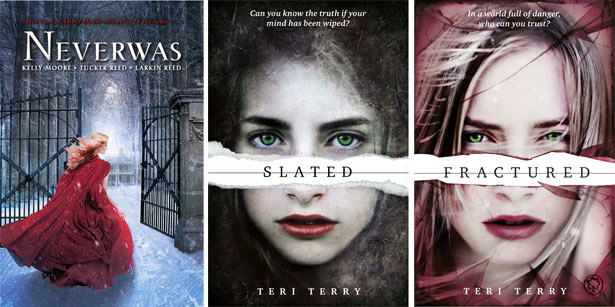
** Neverwas: Book II of the Amber House Trilogy By Kelly Moore, Tucker Reed, Larkin Reed. Little, Scholastic, Inc., $17.99.
Slated By Teri Terry. Nancy Paulsen Books, $17.99.
Fractured: A Slated Novel By Teri Terry. Nancy Paulsen Books, $17.99.
Just as the success of Twilight opened the door for a new surge of vampire fiction, The Hunger Games trilogy has created an opportunity for young adult dystopian fiction. The Amber House and the Slated trilogies are nothing alike in time, place or feel, but both place teenage girls as protagonists who find themselves fighting a world gone wrong. In Neverwas, the follow up to last year’s Amber House, Sarah discovers that somehow, when she changed the past for her family, she also changed the world. She has come with her family from Astoria, the free country of the Pacific Northwest, to the American Confederation of States in a world where segregation still exists, the Nazis have been in power for more than 30 years and a potential world war looms. Neverwas retains the gothic feel of Amber House as Sarah tries to listen to the ghostly echoes of the old house in order to change the world again and simultaneously negotiate the confusion of teenage love.
Slated and its sequel Fractured also pair a love interest with a fight to change a dystopian world, and like Amber House, the center of the book is not whether girl gets boy, but whether girl can change a horrible world into a better one. Sixteen-year-old Kyla has been “slated” — for some crime she does not remember, her memory and personality have been erased — and she is given a second chance with a new self and a new home. Slated and Fractured are set in a future Britain where the slated youth, who have been deemed violent, are sentenced not only to lose their memories but also to wear bracelets that will kill them if they feel anger or strong emotion. But as she slowly relearns this world that she no longer remembers, Kyla also gets hints of who she once was. — Camilla Mortensen